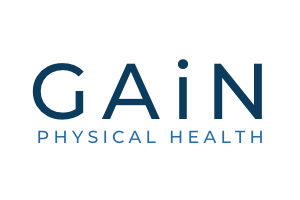LATERAL HIP PAIN
Gluteal Tendinopathy (Greater Trochanteric Pain Syndrome, formerly known as Hip Bursitis).
What does it feel like?
- Pain or tenderness on the outside of the hip, typically worse at night, first thing in the morning or after rest.
- The pain can also radiate down the outside of the thigh.
How can it start?
A change in physical activity e.g. starting a new exercise program or changing your current exercise/training program. The tendon is unable to recover and keep up with new demands placed upon it.
It’s also common in woman over 40 years of age experiencing hormonal changes. This is due to the effect estrogen has on collagen production.
What aggravates the symptoms?
- Laying on your side at night
- Climbing stairs and hills
- Activities where you have to stand on one leg e.g putting on pants.
What are other associated factors?
- Hormone changes in females (menopause)
- Habits like sitting cross legged, standing with knees together/feet apart or leaning into one hip whilst standing
- Changes in exercise habits
Here’s how Osteopathic Therapy can help:
We Investigate:
- We will explore historic load to your hip, searching for patterns that can increase risk of injury e.g. a sudden relative increase in volume, frequency, intensity or type of training.
- We will locally test your hip joint and muscle function
- We will look at your global biomechanics for possible factors which may contribute to the symptoms, for example stiffness or lack of control of other joints in the body may be leading to overuse of the gluteal muscle and tendon.
We Diagnose:
We will diagnose your condition and rule out other causes of pain e.g. hip osteoarthritis, nerve root compression or referred pain from the lumbar spine
We Treat:
Treatment modalities include joint articulations, soft tissue therapy and exercise therapy.
And finally, we will provide Exercise & Lifestyle Advice:
- We will look to modify your daily movement habits e.g sitting, sleeping and standing postures.
- We will prescribe exercise to allow for adequate stimulation and recovery of the gluteal tendon
- We will teach how much and how frequently to perform exercises e.g. when to back off and when to push and advice on how long to expect the recovery process to take.

